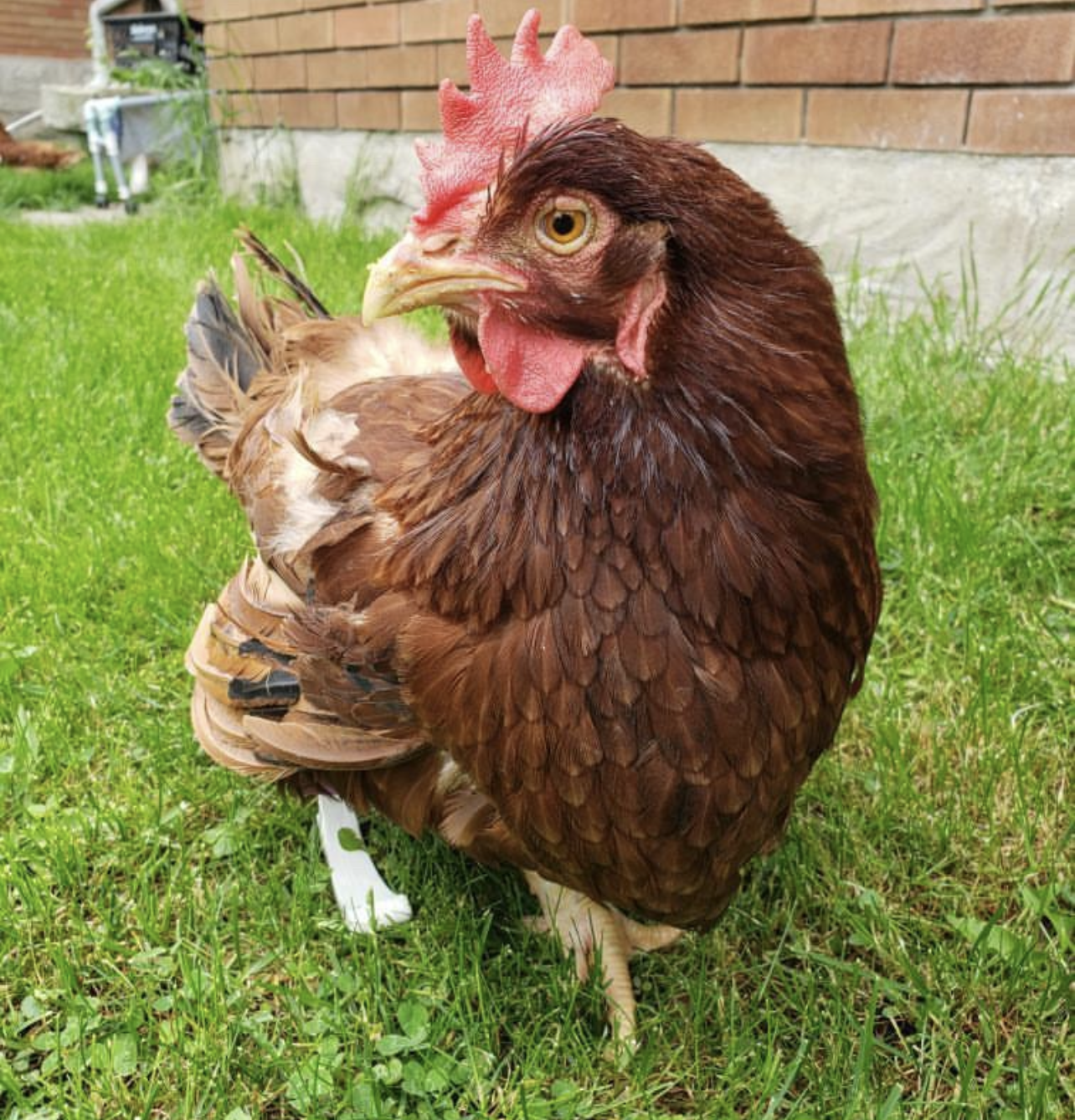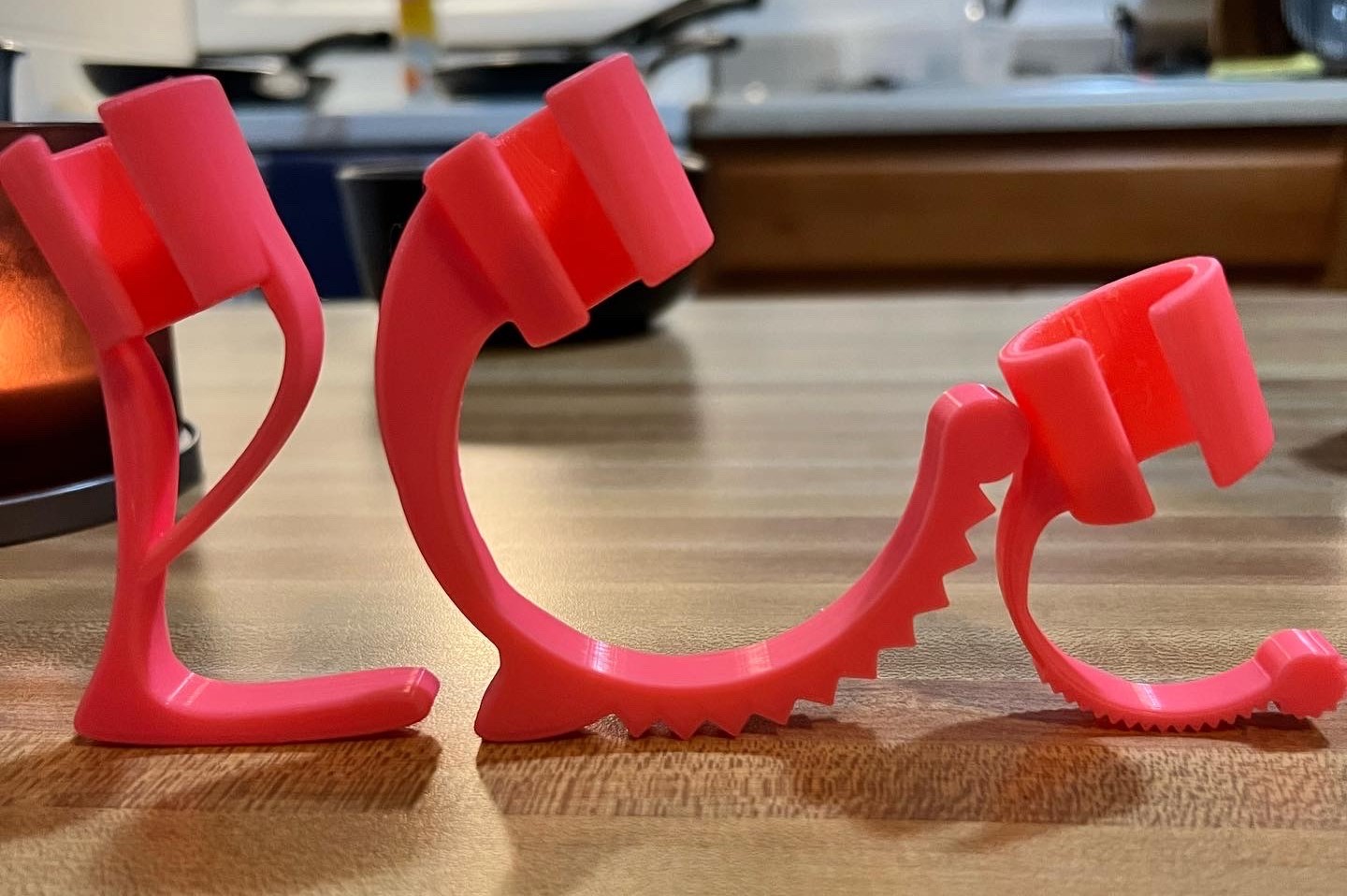3D Printed Prosthetic Chicken Leg
My attempt at helping Elizabeth get mobile again
This project started when I came across Temara Brown on Reddit asking for help designing a prosthetic leg for her rescue hen named Elizabeth. Elizabeth was one of five hens rescued from very poor conditions in someone’s backyard. The hens were listed on line as “good for the soup pot” and had hardened balls of feces all over them. Elizabeth’s right foot was already a lost cause and had to be amputated, but the folks at the Browns’ Microsanctuary believed she could still have a good quality of life, and thus the project of developing a prosthetic for her began.

Initial Design
We based the initial design off of a prosthetic Temara found in a paper that had been used for a Red-Lored Amazon Parrot. Initially, the main challenge was that the microsanctuary was in Canada, and I live in Alabama. This isn’t exactly ideal for taking the necessary measurements. I would design a prototype based off of feedback and measurements from Temara, send her the files, and she would have them 3D printed at her local library before testing them out. I also printed many of the models in order to test them.


Silicone
After getting a few prototypes under our belt, the main problem was that it was very difficult to securely attach the prosthetic to the remaining nub which was basically a cylinder. We didn’t want the prosthetic to rotate or fall off, but we also didn’t want to overtighten the athletic tape or padding which could cut off circulation. Eventually, I remembered that most phones nowadays can make a 3D scan using LiDAR and the camera. Temara somehow made a good scan of Elizabeth’s nub, and I began using that to make better fitting prosthetics.

Now that I had a good model of Elizabeth’s nub, I was able to design the prosthetic to mesh with a silicone piece which would perfectly fit Elizabeth’s nub. We hoped that this would achieve our goal of a good, snug fit without hurting Elizabeth.

I’m very proud of the above image. Together with the prosthetic, it’s one of the more complicated things I’ve designed and printed. In the image, you can see half of the mold including the funnel for pouring the silicone and a vent to allow air to escape as well as an inverted and slightly enlarged section of elizabeth’s nub which the silicone is formed around. That little piece sitting right underneath the nub is a key which I added onto the nub to ensure it’s oriented correctly inside the mold. When I designed this, I had my doubts about how well it would work, but it ended up being perfect. Check out the following pictures to see the results.



Also, please ignore the poor photography. I didn’t realize this would one day be a blog post. At the time these pictures were just taken to share with Temara.
After modifying the plastic piece to fit with the silicone, I got something that looks like this:

Concluding the project
This silicone model ended up being the best we came up with for this project. Shortly after this model, Elizabeth died unexpectedly, officially ending the project. Although there are certainly more effective ways to improve animal welfare, I’m happy that I was able to participate in this project, and I’d do it again in a heartbeat. Below are a couple more pictures of Elizabeth out and about on her most successful prosthetic.


Not “good for the soup pot”
Throughout the world, we kill about 80 billion land animals every year1 and trillions more fish (it can be difficult to estimate because fish deaths are typically measured in tons).234

Almost all of these animals are confined to factory farms where they are seen as units of production rather than the sentient animals that they are.5 There is virtually no regard given to their best interests,6 and abuse is the rule, not the exception.7 The instant that they’re big enough or “spent,” they’re shipped to brutal slaughterhouses.8 They live in squalor and die in terror.
As an effective altruist, I think that our treatment of farmed animals is one of the biggest, most neglected, and most solvable problems in the world today. I chose to solve my portion of the problem a couple years ago, and I hope you’ll do the same.
Models
Check out this Google Drive if you’d like to see some of the models I made for this project. The names are probably very inconsistent, and I may have taken some weird approaches to designing certain things, but that’s how I learned.